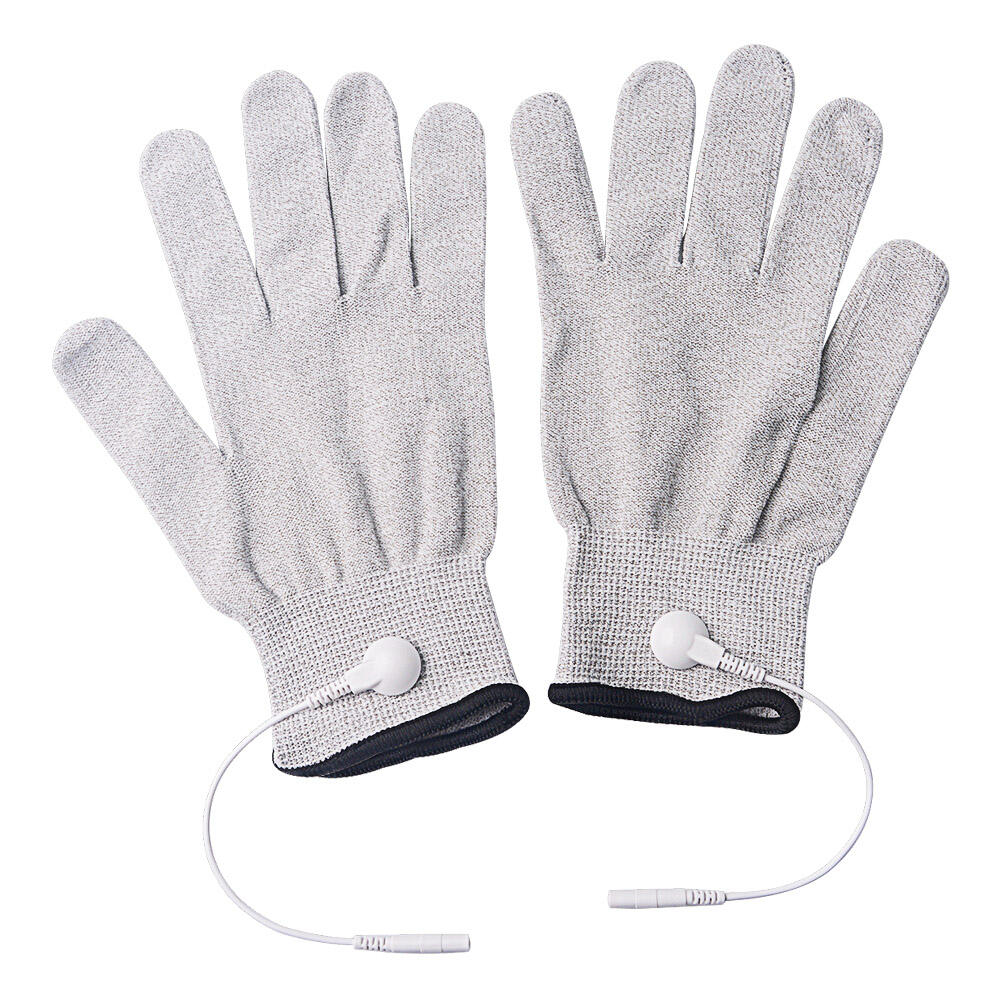The Ultimate Guide to Using TENS Gloves for Maximum Pain Relief Results
In the realm of non-invasive pain management, TENS gloves have emerged as a revolutionary solution for hand-related discomfort. However, many users don't realize that proper usage technique is just as important as the technology itself. Whether you're dealing with arthritis, carpal tunnel syndrome, or general hand fatigue, understanding how to correctly use your TENS gloves can mean the difference between mediocre results and transformative pain relief.
Understanding TENS Glove Technology: A Quick Refresher
TENS (Transcutaneous Electrical Nerve Stimulation) gloves incorporate electrode pads strategically placed throughout the glove's interior to deliver mild electrical impulses to your hands. These impulses work through two primary mechanisms:
Gate Control Theory: The electrical signals compete with pain messages traveling to your brain
Endorphin Release: Stimulation triggers your body's natural painkillers
The gloves' wearable design ensures consistent electrode placement, making them more user-friendly than traditional TENS units with separate electrodes.
Pre-Use Preparation: Setting the Stage for Success
1. Skin Preparation is Crucial
Wash hands with mild soap and warm water
Dry thoroughly - moisture affects electrode conductivity
Avoid lotions, oils, or creams which can create barriers
Check for cuts, rashes, or skin irritation
2. Device Inspection and Setup
Check battery levels before use
Inspect electrodes for wear or damage
Ensure all connections are secure
Familiarize yourself with control settings
3. Proper Sizing and Fit
Choose gloves that fit snugly but comfortably
Ensure full palm and finger contact
Avoid excessive tightness that restricts circulation
Adjust any straps or closures for optimal contact
Step-by-Step Usage Guide for Optimal Results
Step 1: Initial Setup and Positioning
Turn off the device before donning gloves
-
Position gloves carefully, ensuring electrodes align with:
Palm surfaces
Finger joints
Wrist areas
Thumb base
Secure all fasteners for consistent contact
Step 2: Power On and Settings Selection
Start with device powered off
Begin with lowest intensity setting
-
Choose appropriate program:
Program A (High Frequency): 80-100 Hz for acute, sharp pain
Program B (Low Frequency): 2-10 Hz for chronic, aching pain
Program C (Modulation): Varying frequency to prevent adaptation
Step 3: Gradual Intensity Adjustment
Increase intensity slowly until feeling definite tingling
-
Optimal sensation should be:
Strong but comfortable
Never painful or burning
Evenly distributed across treatment areas
Allow 2-3 minutes for sensation to normalize before further adjustment
Advanced Techniques for Enhanced Effectiveness
1. Targeted Session Planning
Morning Sessions: 15-20 minutes to address morning stiffness
Pre-Activity Use: 10-15 minutes before tasks that typically cause pain
Evening Relief: 20-30 minutes to relieve day's accumulation
Breakthrough Pain: As needed for sudden flare-ups
2. Progressive Treatment Protocol
Weeks 1-2: 1-2 daily sessions of 15-20 minutes
Weeks 3-4: 2-3 daily sessions of 20-30 minutes
Maintenance: 1-2 daily sessions based on need
3. Combination Therapy Approaches
Use after warm compress for enhanced relaxation
Combine with gentle stretching during treatment
Alternate with cold therapy for inflammatory conditions
Pair with meditation for stress-related tension
Optimal Settings for Common Conditions
For Arthritis Pain:
Frequency: 80-100 Hz
Pulse width: 150-200 microseconds
Session length: 20-30 minutes
Best time: Morning and evening
For Carpal Tunnel Syndrome:
Frequency: 2-10 Hz
Pulse width: 100-150 microseconds
Session length: 15-25 minutes
Focus: Palm and wrist areas
For General Hand Fatigue:
Frequency: 50-80 Hz
Pulse width: 100-120 microseconds
Session length: 10-20 minutes
Usage: After work or repetitive tasks
Maximizing Long-Term Benefits
1. Consistency Over Intensity
Regular use yields better results than sporadic intense sessions
Establish a daily routine
Track progress in a pain journal
Be patient - benefits often accumulate over weeks
2. Proper Maintenance Practices
Clean electrodes after each use with damp cloth
Store in dry, room-temperature environment
Charge batteries according to manufacturer instructions
Replace electrodes when adhesion decreases
3. Lifestyle Integration
Incorporate into daily self-care routine
Use during sedentary activities like watching TV
Keep accessible for immediate use when needed
Combine with other healthy hand habits
Common Mistakes to Avoid
1. Incorrect Intensity Settings
Starting too high causing discomfort
Staying too low for ineffective treatment
Not adjusting based on daily needs
Ignoring body's feedback signals
2. Poor Usage Habits
Inconsistent session timing
Too short duration for meaningful results
Skipping pre-use skin preparation
Using on dirty or moist skin
3. Device Misuse
Wrong glove size compromising contact
Worn-out electrodes not replaced
Ignoring battery levels
Improper storage affecting performance
Safety Considerations and Precautions
1. Contraindications
Do not use with pacemakers or implanted devices
Avoid during pregnancy
Not recommended for epilepsy patients
Avoid over areas with active cancer
2. Usage Precautions
Never use while driving or operating machinery
Discontinue if experiencing dizziness or nausea
Monitor skin for irritation
Stay hydrated during extended sessions
3. Knowing When to Stop
Sharp or burning pain
Muscle twitching that persists
Skin redness or irritation
Increased pain after use
Troubleshooting Common Issues
Problem: Uneven Sensation
Solution: Readjust glove position
Check electrode contact
Ensure proper skin preparation
Verify intensity settings
Problem: No Sensation
Solution: Check battery level
Verify proper connection
Inspect electrode condition
Increase intensity gradually
Problem: Skin Irritation
Solution: Clean skin thoroughly
Use hypoallergenic electrodes
Reduce session frequency
Allow skin recovery time
Measuring and Tracking Your Progress
1. Pain Assessment Tools
Use pain scale (0-10) before and after sessions
Track medication usage reduction
Monitor daily activity improvement
Note sleep quality changes
2. Functional Improvement Metrics
Grip strength measurements
Range of motion assessment
Daily task completion ease
Reduced rest periods needed
3. Long-Term Outcome Tracking
Monthly pain journal reviews
Healthcare provider assessments
Quality of life improvements
Reduced healthcare utilization
Advanced Tips for Specific Situations
For Work-Related Hand Strain:
Use during breaks for prevention
Focus on wrist and palm areas
Combine with ergonomic adjustments
Short, frequent sessions (10-15 minutes)
For Arthritis Flare-Ups:
Increase session frequency temporarily
Use lower intensities initially
Combine with gentle movement
Extended session duration if tolerated
For Post-Injury Recovery:
Follow healthcare provider's guidance
Start with shorter sessions
Focus on pain-free intensity levels
Gradually increase as healing progresses
Integrating with Professional Treatment
1. Working with Healthcare Providers
Share usage patterns and results
Get guidance on optimal settings
Coordinate with other treatments
Regular follow-up assessments
2. Physical Therapy Combination
Use before therapy sessions for pain reduction
Incorporate during prescribed exercises
Post-therapy recovery support
Home program enhancement
The Future of TENS Glove Technology
Emerging advancements include:
Smartphone app integration
Biofeedback capabilities
Automated intensity adjustment
Enhanced electrode materials
Longer battery life
Conclusion: Mastering Your Pain Management
Proper use of TENS gloves involves more than just turning on a device. It requires understanding your specific condition, implementing correct techniques, maintaining consistency, and listening to your body's responses. By following these comprehensive guidelines, you can maximize the benefits of your TENS gloves and take control of your hand pain management.
Remember that while TENS gloves can provide significant relief, they work best as part of a comprehensive approach that includes professional medical guidance, lifestyle modifications, and other therapeutic interventions. With patience and proper use, you can achieve the optimal results that make daily activities more comfortable and enjoyable.





